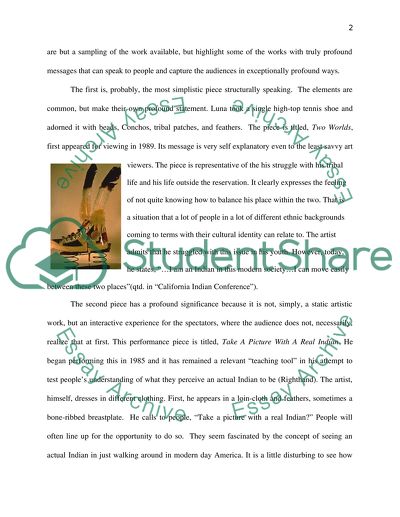Cite this document
(“James Luna: A Native Place Research Paper Example | Topics and Well Written Essays - 1500 words”, n.d.)
James Luna: A Native Place Research Paper Example | Topics and Well Written Essays - 1500 words. Retrieved from https://studentshare.org/history/1452607-artist
James Luna: A Native Place Research Paper Example | Topics and Well Written Essays - 1500 words. Retrieved from https://studentshare.org/history/1452607-artist
(James Luna: A Native Place Research Paper Example | Topics and Well Written Essays - 1500 Words)
James Luna: A Native Place Research Paper Example | Topics and Well Written Essays - 1500 Words. https://studentshare.org/history/1452607-artist.
James Luna: A Native Place Research Paper Example | Topics and Well Written Essays - 1500 Words. https://studentshare.org/history/1452607-artist.
“James Luna: A Native Place Research Paper Example | Topics and Well Written Essays - 1500 Words”, n.d. https://studentshare.org/history/1452607-artist.


